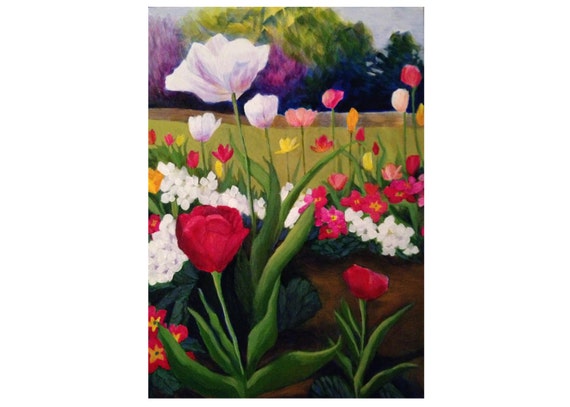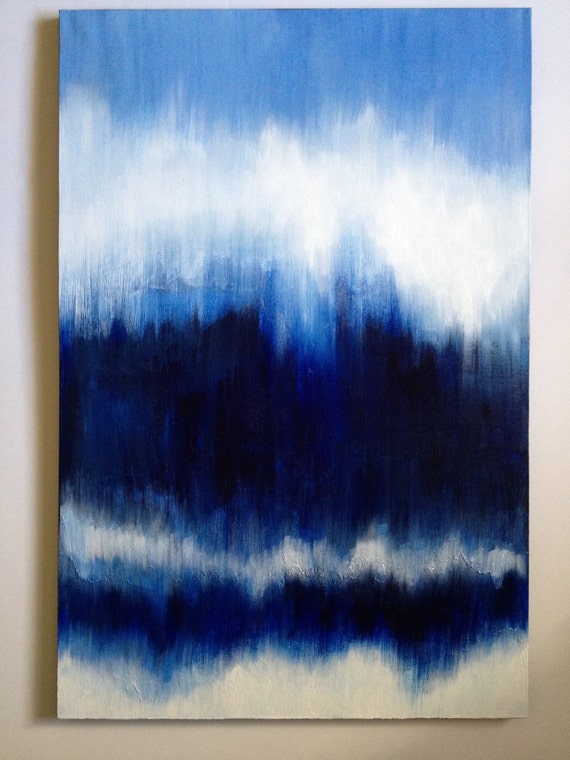Need a Mother's Day gift that is truly personalized but also guaranteed to arrive in time?
 |
Even if you need a last minute Mother's Day gift, the ecard gift certificate for this original floral painting will get there on time--even if you wait to buy until the day before Mother's Day.
|
Mother's Day (Sunday, May 12th) is nearly here! If you want something truly memorable and personal, yet still affordable and able to get to your mother or grandmother in time, I have a limited time offer for you.
Limited time offer: Mother's Day Garden Portrait Painting From now through May 11th, you can buy a custom portrait of your mother's garden or grandmother's garden, with delicate brushwork and subtle glazing.
With this offer, you will get a customized portrait for the price of a made-to -order painting.
Four Mother's Day Garden Portrait sizes are available:
- mini-portrait ($39.99 plus shipping) 6" X 8" X 1 and 3/8"
- small garden portrait ($49.99 plus shipping) 8" X 10" X 1 and 3/8"
- medium portrait ($74.99 plus shipping) 16 X 20 and 3/8" (About the size of a large baking sheet pan.)
- large portrait ($149.99 plus shipping) 24" X 36" X 3/4" (This is two feet by three feet, so an "over-the couch" size painting.)
THE CUSTOM PAINTING PROCESS:
1.)
Find the right size listing:
Visit my etsy shop, and click on the listing for the size "Mother's Day Garden Portrait" that you want.
2.)
Buy the painting.
Click "add to card" to buy, and either pay through PayPal (much preferred) or by credit card. I also accept etsy gift cards. If you wish to use one for either all of the purchase or a discount on the purchase, the etsy website will automatically guide you step by step through this process.
3.)
Send me your gift recipient's contact information.
Please include your gift recipient's email address AND mailing address in the "note to sender" during checkout. If you forget to do this, please email the information to me.
4.)
An ecard is sent.
I will email an ecard to your gift recipient on Mother's Day. It will have a Mother's day greeting, an explanation of the custom painting process, and my contact information in it.
5.)
A photo of her garden is sent to me.
Either you or your gift recipient sends me at least one image of the garden as a photo reference to turn into a painting.
6.)
Art production and communication by email:
Over the next few weeks, I will communicate with your gift recipient directly: emailing photos of the artwork in progress, taking suggestions or editing when asked.
This is the truly personalized part of the process. Your mother or grandmother gets to make choices about her painting's colors, style, and composition. Together, we will make the painting just the way she wants it.
7.)
Final approval.
I will send an image of the finished work and get your gift recipient's approval. When she is happy with the image, I varnish it, let the varnish dry, and ship it to her.
8.)
Shipping
I ship via FedEx Ground or FedExHomeDelivery for larger packages. I ship via USPS priority mail for smaller packages. I carefully wrap and cushion your artwork so it will arrive safely.
HOW TO HANG:
The two smaller canvases are deep profile so they can sit on shelves or hang from a nail. The larger canvases are standard profile and can be hung either with or without a standard size, open back frame. I paint the edges, so no frame is needed.
CONTACT ME BEFORE BUYING TO ADD ON OPTIONAL EXTRAS:
Hanging wire installation available:
For the medium size or large size paintings, I can install hanging hardware and professional wire on the back for an $10 fee (the supplies at local craft stores are roughly $6 for this, if you would prefer to do it yourself.)
Premium knife paintings available:
Note that this listing is for brush paintings, not knife paintings. If you prefer a knife painting, contact me for a different price list (both materials and supports cost more). Also, do know that the production process is longer, since they they take more time to make and more time to dry.
My contact email:
paintingsbykirstenelizabeth@gmail.com
BUY MORE THAN ONE TO SAVE ON SHIPPING:
If you buy two paintings from my etsy store, shipping is automatically reduced, even if you are shipping the items to different people.
Paper Gift Cards are NOT available:
The ecards included are fast and free. I decided
not to make paper cards available. I realize that some mothers or grandmothers still do not use email, but the process of collaborating with them on the painting's creation would become too difficult and costly for me to do by mail or phone.
COPYWRITE NOTE:
Note that, by purchasing this custom garden portrait, you are giving me permission to do a derivative artwork, based upon your photograph (or your mother's photograph). Even though the photograph was yours and the painting is yours, all the rights to the image and rights to reproduce the image are still mine. So, for instance, I can still make prints based upon this painting.
This is common practice for all U.S. artists. I mention it only because I want to be sure customers have full knowledge of the legal aspects of buying commissioned art.






















































